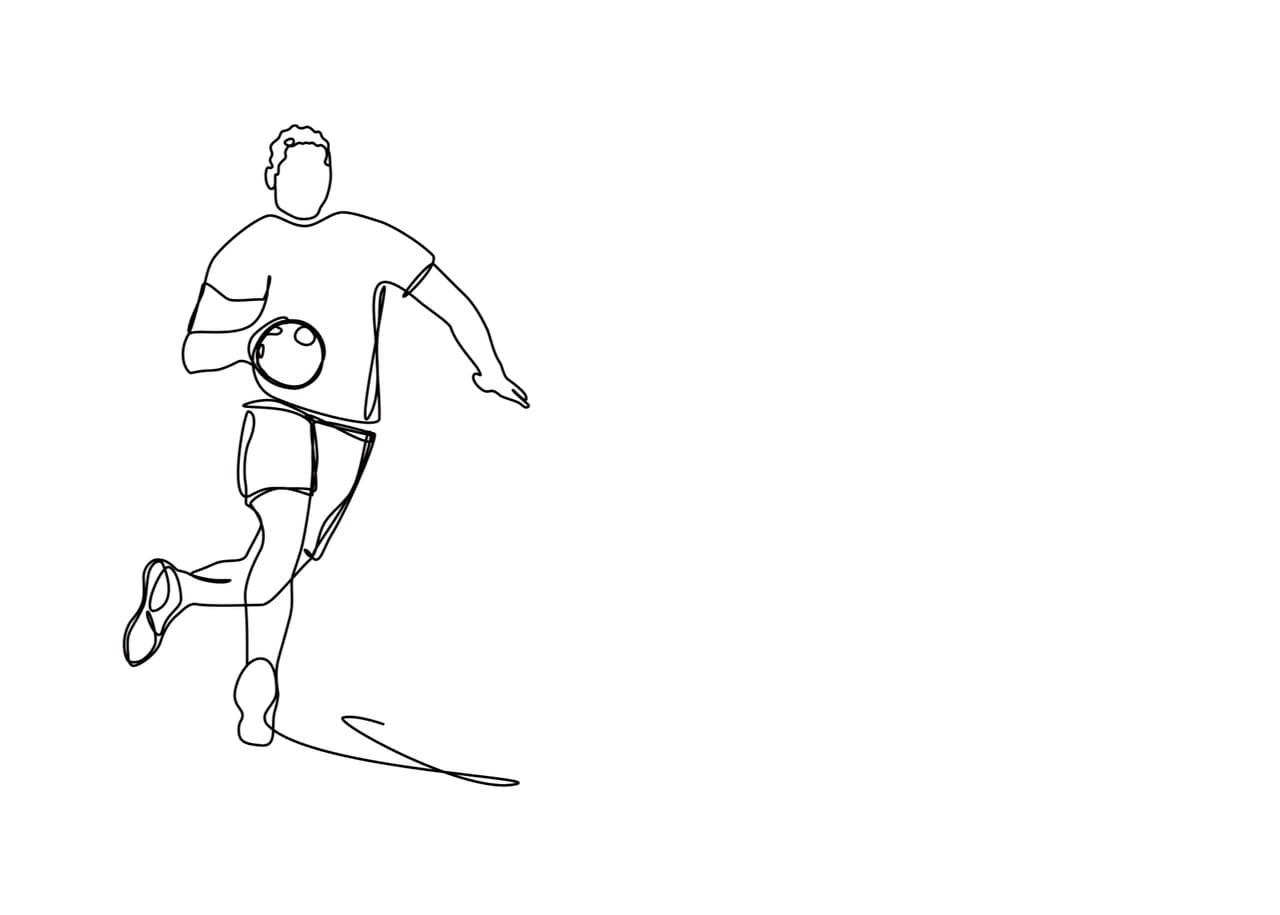
OUT OF THE BOX U15
the tool he most often uses is catching and passing the ball”
Read more >
If we look at the crossing as a game of two attackers with one defender in a restricted space and in a very short time,
learning from the automated technical skills and way of movement,
becomes the automation of situational thinking
Read more >
PERIPHERAL VISION 4/4
The final level of the process of developing strategies for unconscious information receipt (“to see”):
The view is kept at the “point of perspective” and we equally follow the entire peripheral vision area.
Attention is not shifted from one object to another or from the specific area of the court to another, but we pay equal attention to the whole area.
Read more >

THINK OUTSIDE THE BOX AND
PLAY OUTSIDE THE BOX
One of the most common doubts in working with children is how to teach Dora to catch a ball and make a long pass in motion without throwing “balloons”.
The solution can be found in exercises like running the playground in pairs and in groups of three where we are looking for her to keep a certain distance, popular exercise “criss-cross or eight”, etc.
We think these exercises are good, but since they are neither game nor competition, they don’t provide an emotional stimulus, and there is no situation to solve.
Therefore, they are not good enough.
Read more >

INTENSITY
To stimulate the development of psychomotor speed, it is necessary to create exercises that satisfy several criteria:
The player assesses the situation and reacts based on that assessment.
Or vice versa.
Playing automatically is not a developmental incentive.
Decision-making and responding processes must be fast.
Or vice versa.
If the environment does not rush decision-making and responding processes, it is not encouraging.
The player must immediately see the effect of playing good or bad.
Read more >
Ana, Kalina and pushing the ball
“There are many players who are good at passing the ball and shooting, but they are not good players,
but there is no good player who does not know how to do it well.”
Read more >
BREAK THROUGH
Break through – an old-fashioned technical element going out of style
or the basis for creating numeric superiority of players in a specific part of the court?
Read more >

BIOMECHANICS OF MOVEMENT
AND PSYCHOMOTOR SPEED
Since the methods of handball education are based on the integral approach to an athlete, it is sometimes difficult to distinguish whether certain contents are a developmental impulse for movement biomechanics or psychomotor speed and this should be so because our goal is to impact simultaneously as many abilities as possible.
However, we should always know on which abilities we act primarily.
Read more >

It’s great to have a back player who is tall enough and who is also able to jump high enough to score a goal from a jump shot over the defense line.
But what if he can’t?
Read more >
A key to all feints is a trick.
The defensive player thinks the attacker will do one thing,
but he does something else.
Read more >

Sometimes situations in sports are similar to life situations and are an example of how to turn disadvantages into advantages.
One of them is new game elements which occur as a result of a need to overcome the disadvantages.
Historically, due to the insufficient number of left-handed players, it has often been a case that right-handed players played a right-wing position.
Read more >
How do we teach players to find simple solutions in situations where they have a lot of potential solutions?
By enhancing the number of possibilities and shortening their decision time.
Read more >

